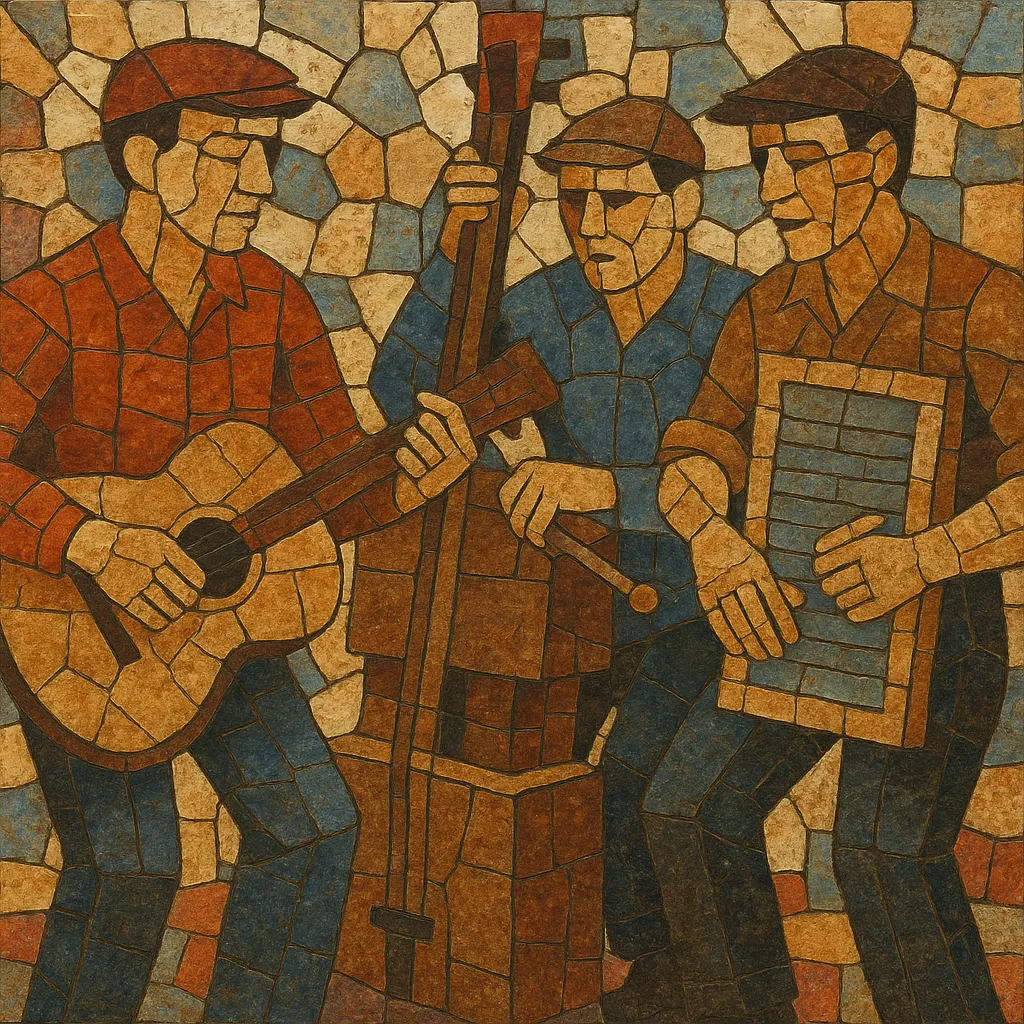Skiffle is a lively, do‑it‑yourself style built from American folk, blues, and jug‑band traditions, popularized in mid‑1950s Britain. It features simple song forms, energetic strumming, and an emphasis on homemade or low‑cost instruments such as washboard percussion and tea‑chest bass.
The genre’s appeal lay in its accessibility: young musicians could form groups with minimal resources, covering American folk and blues standards at brisk tempos. Skiffle ignited an amateur band boom in the UK, laying the groundwork for the country’s later beat and rock movements.
The term “skiffle” appeared in the United States as a colloquialism linked to informal rent‑party music and was associated with jug‑band and jazz contexts. Its musical DNA comes from American folk and country blues repertoires, along with early jazz rhythms and the homemade instrumentation of jug bands.
In Britain, skiffle coalesced in the early 1950s within traditional jazz circles. Ken Colyer’s and Chris Barber’s bands played short, stripped‑down interludes—often featuring Lonnie Donegan—of American folk/blues numbers on acoustic guitar, tea‑chest bass, and washboard. Donegan’s recording of “Rock Island Line” (1955/56) became a surprise hit, sparking a skiffle craze. Thousands of UK teenagers formed groups, discovering the thrills of rhythm, group singing, and portable instrumentation.
As the craze peaked, notable groups such as The Vipers Skiffle Group and the Chas McDevitt Skiffle Group scored chart entries. Skiffle’s emphasis on I–IV–V harmony, brisk tempos, and sing‑along choruses made it an ideal gateway for aspiring musicians. By the end of the decade, rock & roll and emerging beat styles began to eclipse skiffle’s chart presence, but many skifflers transitioned directly into the new sound.
Skiffle’s greatest legacy is catalytic: it democratized music‑making in post‑war Britain and directly nurtured the next wave of artists. The Quarrymen—John Lennon’s skiffle group that soon included Paul McCartney and George Harrison—evolved into The Beatles. Skiffle’s DIY spirit and repertoire of American roots songs also fed British blues, folk‑rock, and garage‑band cultures for decades thereafter.


